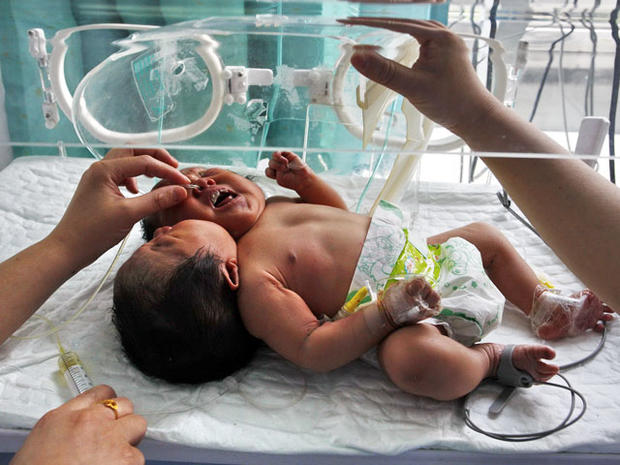Conjoined twins born in China: Can they be separated?
(CBS/AP) - BEIJING - Twins are often close, but few are as close as the conjoined twins born in China on Thursday. The girls - who were transferred from a hospital in Sichuan province to one in Chongqing - have two heads but share a single body.
The local Huaxi Metropolis Daily reported the twins weighed 9 pounds and measured 20 inches. They have two arms, two legs, two spines, and two esophaguses but share other organs.
The twins are believed to suffer from dicephalic parapagus, the Daily Mail reported. That's a condition in which a fertilized egg fails to fully divide, and it's extremely rare.
How rare? The condition occurs once in every 50,000 to 100,000 births, according to a medical literature review published in 2005. In part because of anatomical problems, about 40 percent of conjoined twins are stillborn, and 35 percent die within the first 24 hours of life.
Most conjoined twins are born in Asia and Africa. But they're not unheard of in the U.S. Abigail and Brittany Hensel, conjoined twins from Minnesota, have become minor celebrities. Now 21, the Hensels can drive, play sports, and do just about everything else ordinary people do - and, according to a report from Gawker in March, Brittany is engaged.
The Chinese twins can look forward to a life of togetherness. Doctors say separating the girls would be nearly impossible.
